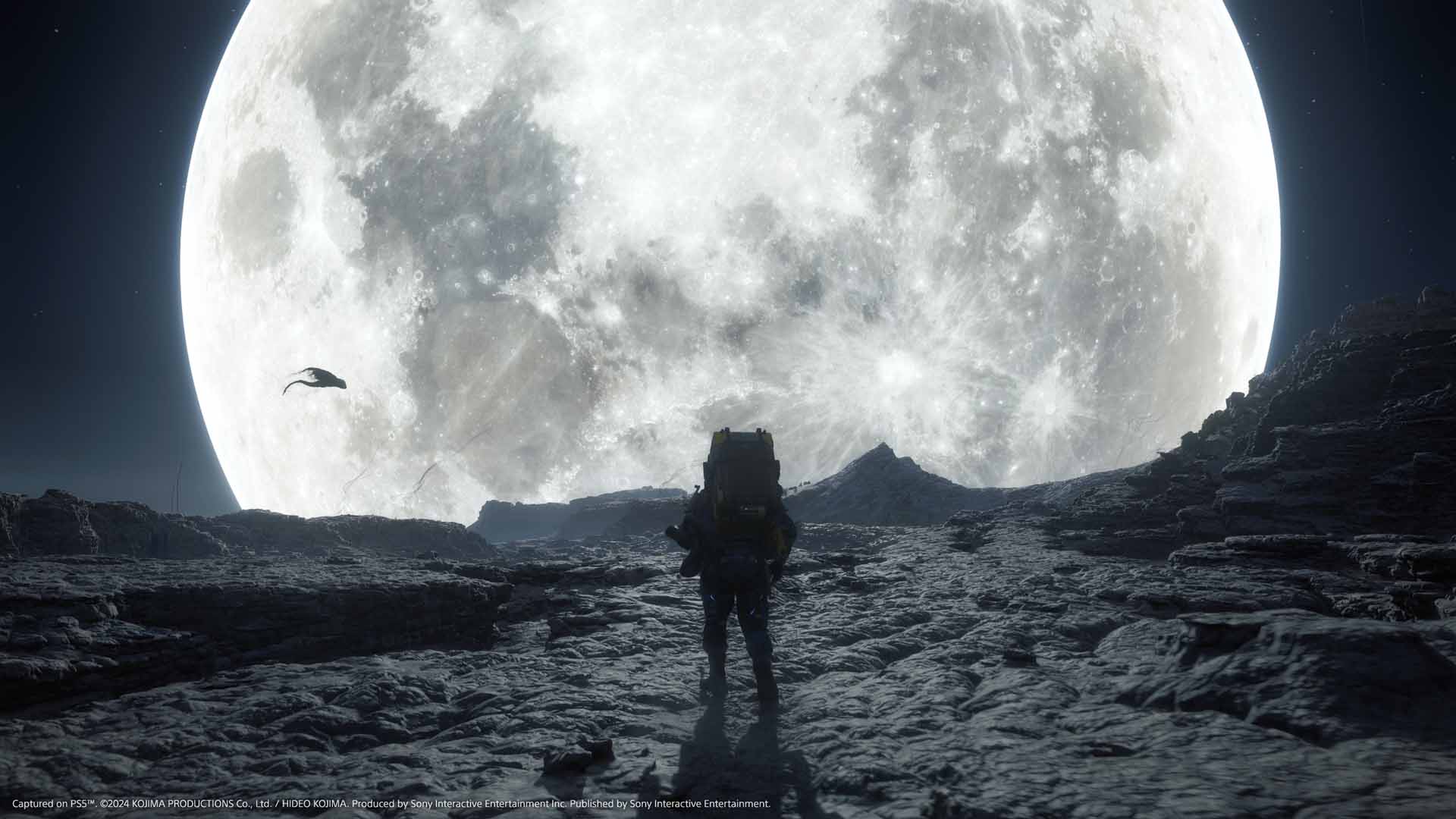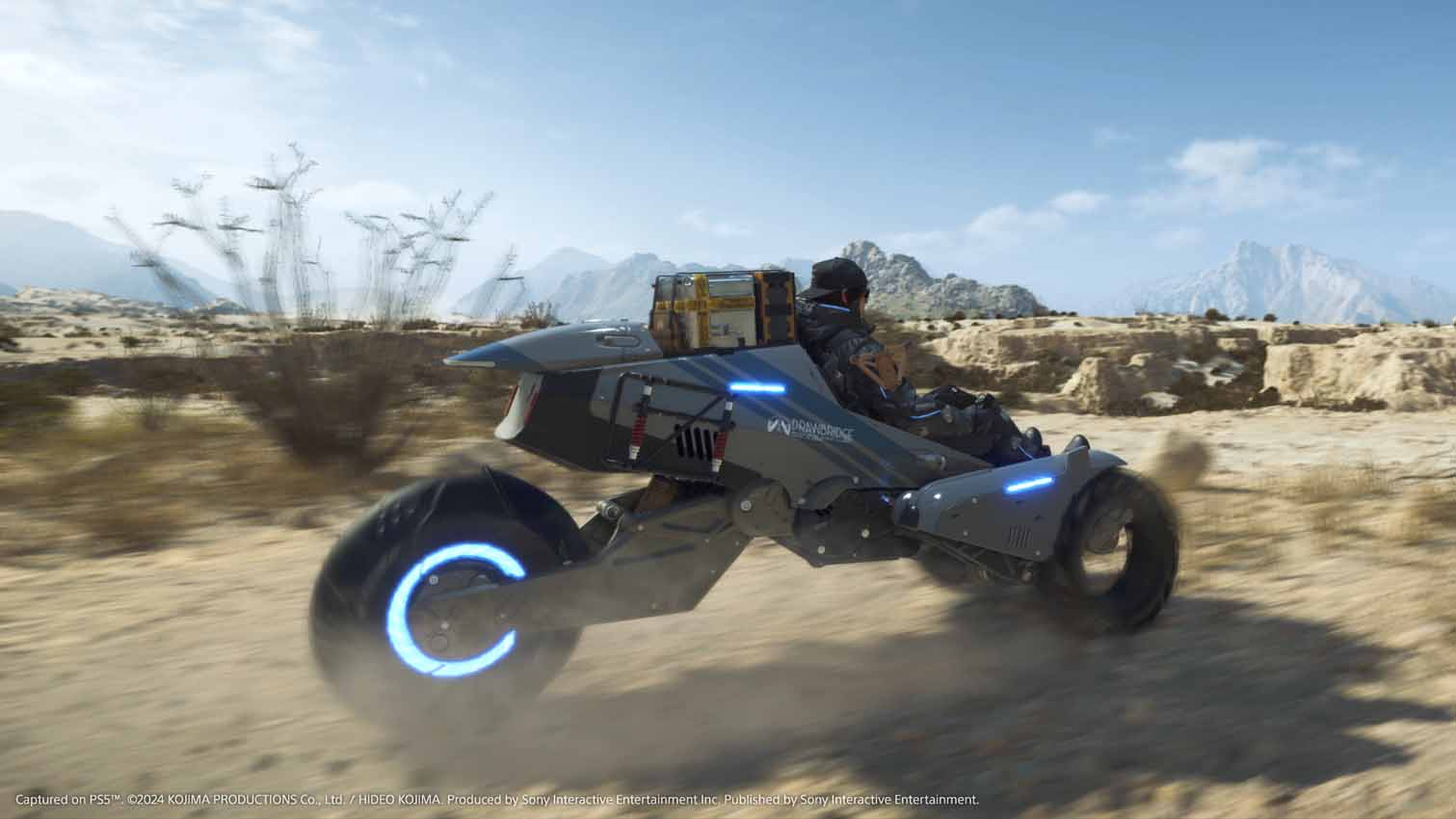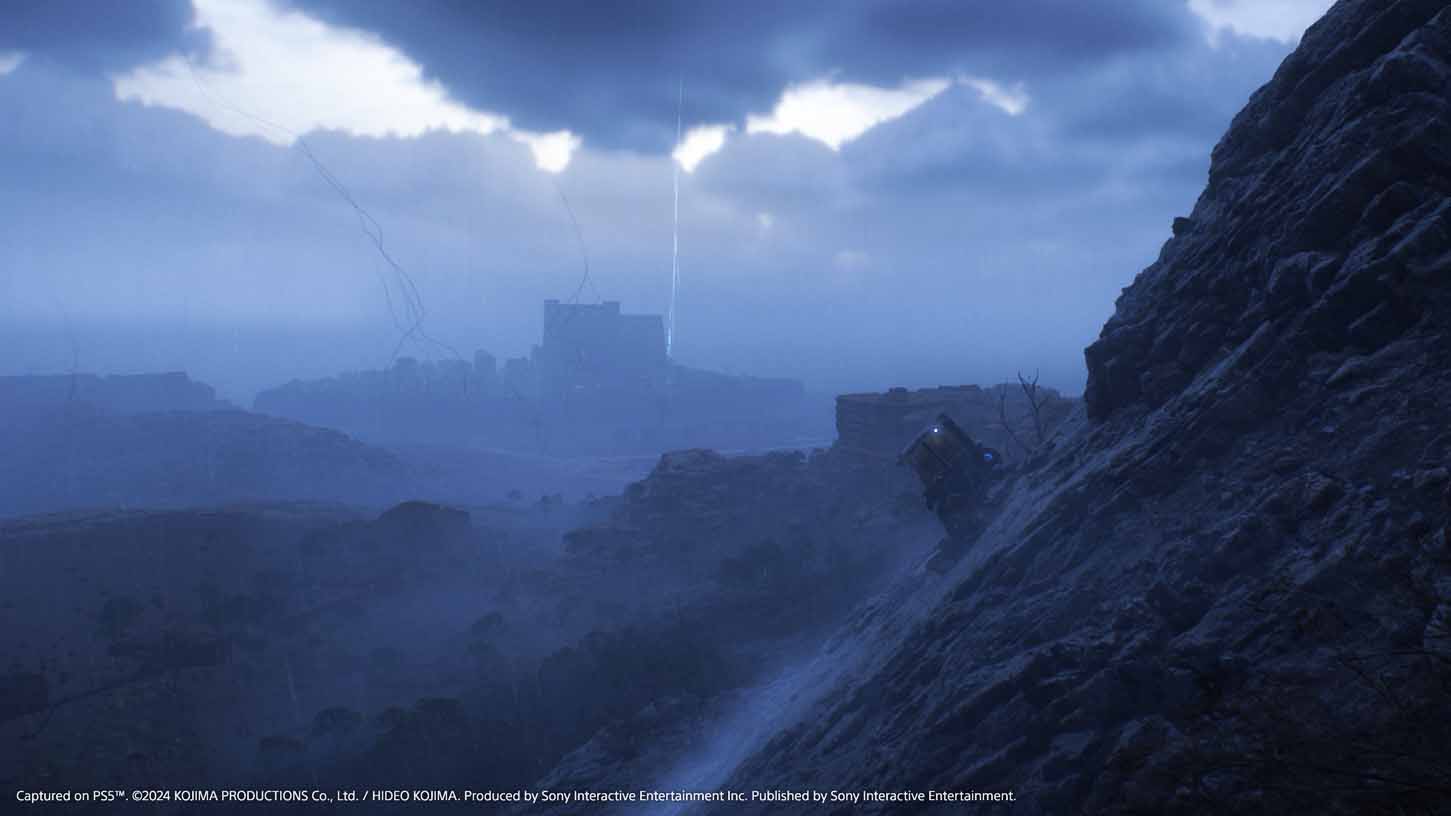
Death Stranding 2 is a masterpiece, but is it a decent driving game?
The long and winding road that leads to Hideo Kojima’s art
You’ll no doubt have heard something about Death Stranding 2 since its release. An artisanal piece of game design presented with arthouse strangeness, it’s a game about shifting boxes around in the apocalypse that somehow makes that incredibly mundane task feel captivating, but also retains the lingering sense that the whole thing might be a practical joke at your expense.
It is, ultimately, a masterpiece. The world that protagonist Sam Porter-Bridges occupies has been changed almost unrecognisably by the Death Stranding event, a mysterious phenomenon that has allowed the dead back into the realm of the living, and now there are Beached Things, or BTs, roaming around on the surface. Being killed by a BT causes a massive and devastating explosion called a Voidout, so all surviving humans have fled underground to their bunkers.
There’s some pandemic allegory in there, and no shortage of discourse about how we connect with each other in the digital age. It has much more to say than the vast majority of games do, and a much more vivid, esoteric, and fascinating way of articulating it, too. The preposterously A-list Hollywood cast helps, of course – Léa Seydoux, Norman Reedus and Elle Fanning are just some of the big names among many others.
However you feel about being a post-apocalyptic DPD man, the sheer quality of Metal Gear Solid creator Hideo Kojima’s world-building and storytelling steamrolls your reservations about the prosaic hiking gameplay and forces you down onto a reverent knee by the time the credits roll.
But is it a good driving game? That’s the question nobody dares tackle. Here’s a game in which you’re frequently tasked with driving vehicles full of cargo for upwards of 20 minutes across a vast open-world map of Australia (albeit an off-kilter, slightly Scandi version of Australia with a massive snowcapped mountain in its centre), and yet nobody’s talking about the handling physics. An oversight which it falls to TG to rectify.
What are the vehicle options?
There are just two vehicles available, and wouldn’t you just know it, they’re both EVs.
As such, the battery life on both the Tri-Bike and the Pickup Off-Roader is a major purchase consideration. On the plus side, charge time is almost instantaneous, and if you’re travelling within the Chiral Network – territory that’s been hooked up to Death Stranding 2’s mega-internet and where other players can build shared structures for anybody to use – recharge stations are frequent.
Since it’s your job to connect human settlements to the Chiral Network, though, you’re often travelling outside of it. If you hit zero charge out in that barren territory, your options are as follows: get out and walk, or throw your head back, shout some expletives into the sky, and then get out and walk.
How do they handle?
Let’s start with the Tri-Bike. In a way it’s bang on trend – we’ve seen boxy Eighties design principles find their way back into the zeitgeist in EV form recently via the Hyundai N Vision 74 and Renault 5, so why not a Reliant Robin, too?
While the latter was designed primarily to transport market traders’ goods to and fro or go round corners on two wheels in BBC sitcoms, the Tri-Bike is an all-terrain vehicle capable of navigating rocky trails and scaling formidable hills. It’s a marked upgrade on its inspiration, in that sense.
Top Gear
Newsletter
Thank you for subscribing to our newsletter. Look out for your regular round-up of news, reviews and offers in your inbox.
Get all the latest news, reviews and exclusives, direct to your inbox.
However, very little joy can be extracted from the driving experience. That’s partly down to the punishingly trundling top speed, partly down to the fact it takes corners like a shopping trolley, and also partly down to the scarcity of actual roads in DS2’s Australia. Not strictly the vehicle’s fault, but worth bearing in mind for any potential buyers.
Oh dear. Does the Pickup Off-Roader fare any better?
As a matter of fact, it does. The basic factory model might not excite, but this thing’s got serious upgrade potential and – importantly for the end-times courier – cavernous boot space.
A near-infinite amount of cargo can be loaded into the rear, and even when driving with heavy loads the steering maintains a lithe, responsive feel that Tri-Bike owners can only dream of.
The fun really begins should you opt for anti-gravity module and mountain tyre upgrades, though. With this spec you can jump the car several feet in the air to clear substantial boulders, and drive up sheer mountain faces at full throttle. It’s hard to find fault with that.
It’s also worth calling out the avant-garde seating position: the driving seat is positioned several feet clear of the giant front wheels, leaving you dangling in the air as you drive for extra ground clearance and, let’s face it, cool points.
Can you race them?
Not really. Part of Death Stranding’s bizarre but lingering appeal is its slow, deliberate pacing, so anything quicker than walking pace feels nippy in this world. With that in mind, it’s probably no surprise Hideo Kojima didn’t think to build a banked oval circuit amidst his meditative hiking game about human connection.
If you were particularly determined to find a performance angle, you could replay missions while trying to beat your previous time and refine your route on the map each time. But that doesn’t suddenly turn it into Gran Turismo 7.
It’s almost like this isn’t a driving game at all.
We’ll level with you: it isn’t. And yet it’s a game in which driving accounts for the majority of your gameplay. What a curious dichotomy.
If you can stomach the absence of lap times, there’s a genuinely wonderful and thought-provoking experience to be had here, even though the cars handle like washing machines. There will be extended passages in which you grow bored, and moments in which you might actively come to dislike it. But Death Stranding 2 is a special kind of game that rewards perseverance with imaginative sci-fi, dreamy imagery and poignant social allegory every few hundred miles.
Trending this week
- Car Review
BMW iX3










